The power of now: Enhancing user experiences
Being an ‘always-on’ digital business can present many challenges, but these are outweighed by the benefits

We live in a switched on world where the customer really is king. A loyal customer will generally tell some people about their positive experience, while an unhappy customer will shout loud and long, using all available mediums.
By 2017, the majority of marketers (89 per cent) expect the customer experience to be their primary differentiator, according to analyst firm Gartner.
"Customers will not tolerate companies that have amnesia when it comes to remembering them and their preferences for recognition," says Gene Alvarez, managing vice president at Gartner.
"This makes it imperative for companies to recognise their customers and to serve them pertinent content that demonstrates the proper recognition and treatment."
So, how then, can organisations ensure they continue to delight customers?
Putting the customer at the heart of digital transformation
"Each time your customers order groceries or hail a cab through an app, they send a clear message to you go digital, or go home. This choice is not only a manifestation of the digital disruption that has been picking up speed in the last 18 months or so; it is also indicative of what customers want. For businesses undergoing a digital transformation, it's time to wake up and smell the coffee!" said Vikul Gupta, director of digital assurance and DevOps at Cognizant, in a recent blog post.
"Digitally empowered customers demand high-quality services, right at the time of need. For this, businesses need to speedily develop software that keeps up with the quality customers expect. The digital mandate is Quality@Speed."
There is somewhat of a revolution taking place and it's one businesses need to sit up and pay heed to. Those who choose to ignore what is happening will ultimately pay the price.
The power of the cloud

Cloud computing enables large businesses to be as agile as start-ups and levels the playing field for smaller firms so they can think and act big.
It's flexible pricing model also means businesses can scale up and down as required. Indeed, this is how many retailers cope with expected seasonal demand such as Black Friday and Christmas as well as unexpected surges, such as those brought about by recession and Brexit.
It's also a much-needed coping mechanism for companies when they become famous overnight, due to a celebrity endorsement or social media shares, for example.
Businesses pay only for what they need and need only what their specific circumstances dictate. The delivery cycle of innovations from idea to product is also much shortened thanks to the cloud and agile development with workloads able to be moved seamlessly around to prove the business case for widespread production.
Gartner predicts an industry cloud shift' which will, by 2020, have an impact on more than $1 trillion in IT spending. The analyst firm also believes, during the same timeframe, that it will be incredibly rare for organisations to have a no cloud' policy. It will just be simply unheard of or unthinkable to ignore the benefits on offer and remain attached to legacy shackles.
"Cloud-first strategies are the foundation for staying relevant in a fast-paced world," said Ed Anderson, research vice president at Gartner.
"The market for cloud services has grown to such an extent that it is now a notable percentage of total IT spending, helping to create a new generation of start-ups and "born in the cloud" providers."
Cloud computing and other modern tools and technologies make organisations more agile. As a result they can be much more proactive rather than reactive to changing user and market dynamics. But, also much more able to change focus or approach should they encounter the unexpected.
Information is the lifeblood of any organisation and, in this new dawn where customers hold the keys to success, data will become a much more valuable currency. Organisations will have to drive insight from this data to help make decisions the right ones more quickly than ever before.
Indeed, Gartner highlighted the importance of predictive analytics recently in its 2016 Hype Cycle.
"As marketers embrace data-driven marketing strategies to improve customer experience through coherent content and messaging, and advertising adopts programmatic practices and real-time bidding markets, customers will increasingly expect consistency and coordination from all branded communications," said Mike McGuire, research vice president at Gartner.
"Real-time and event-triggered marketing are a key focus for marketers and advertisers alike. As all forms of marketing look for greater efficiency and effectiveness, predictive analytics are rapidly gaining the attention of advanced marketers."
Looking closer to home

It's also not just about delighting external customers. Many experts have theorised about the benefits of treating internal users like customers too and with good reason.
An IDC Research study in mid 2015 found a serious disconnect between customer and employee experience. It discovered that, while 81 percent of the organisations surveyed have in place ways to measure their customer's experience generally through satisfaction surveys some 69.4 percent of firms don't bother trying to gauge or measure the employee experience at all. Something certainly seems amiss here.
This important employee satisfaction piece should not be underestimated. Happy employees are more motivated and will likely go above and beyond for an employer who they believe cares about them and their happiness. Demotivated employees may just do their jobs and nothing more, while the worst case is absenteeism, poor quality and a lack of attention to detail or care about consequences.
"Given the buzz around technology and its benefits, many IT initiatives are seen through either a technology and/or business lens; the view through the employee-productivity lens is either missed or taken for granted," said Cognizant in a recent whitepaper focused on increasing productivity in the connected enterprise.
Organisations have a number of challenges to overcome in order to reap the rewards, but it's clear two key considerations need to be front of mind, according to Cognizant: 1) The need to understand that work is something that happens, rather than a place you go, and workforces are very geographically distributed and 2) The need to respond to the needs of Gen-Now' and the always-on nature that technology provides.
Cognizant offers the following guiding principles to organisations trying to navigate the maze of digital disruption to find a way of delivering on the digital needs and wants of customers:
- Accelerate smart work anywhere/anytime
- Institutionalize process excellence
- Facilitate insight and provide information visibility
- Promote compliance
- Collaborate and support teamwork
Bringing it all together

"Cloud computing is breaking down traditional technology barriers as line of business leaders and their IT organisations rely on cloud to flexibly deliver IT resources at the lower cost and faster speed that businesses require," said Eileen Smith, program director, customer insights and analysis at IDC.
"Organisations across all industries are now free to adapt to market changes quicker and take more risks, as they are no longer bound by legacy IT constraints."
UK organisations have made great strides in focusing on the customer experience, according to research, but there is still more to be done.
"CX Index data shows that UK brands have made clear progress in their customer experience efforts," said Joana van den Brink-Quintanilha, senior analyst at Forrester Research.
"But don't mistake progress as a cause for celebration; it is simply a jumping off point. For the second year running, none of the UK brands achieved an excellent score. This indicates a significant opportunity for brands to gain a competitive advantage through experience-based differentiation. Indeed, CX investments are more important than ever for UK brands."
Once your internal users understand the power of always-on availability and the cloud, they can start to see how they can work with other business departments and the IT function to work in a much more seamless way.
A seamless way of working that brings down barriers and ups productivity levels thanks to better communication, collaboration and increased transparency. Everyone can see at a glance who needs to do what and when and the tools they need to play their part are always there or can be delivered speedily.
"By 2020, 40 percent of sales organisations will rely primarily on mobile digital technology for their sales force automation initiatives. The types of devices and nature of application will greatly expand to support processes and real-time communication that were not possible with traditional computing technologies, such as laptops," Gartner's Alvarez added.
"This means that mobile strategies need to go beyond smartphones and tablets. These strategies must move toward a multichannel approach to encompass and take advantage of concepts, such as the Internet of Things."
Once the internal user experience has been transformed, they are better equipped to deliver on and exceed customer expectations. And can do so both efficiently in terms of cost and resources and securely.
Cloud and a more connected world generally presents more opportunities than it does problems, but it's important for everyone in the organisational food chain from users to IT leaders and business heads to be aware of the potential pitfalls and either work around them or do their best to minimise the risks.
"To compete in the digital race, businesses need to deliver services that digitally savvy customers appreciate and value," Gupta concludes.
"This requires a QA strategy that intelligently leverages the insights garnered from data analytics to fine-tune their services at the speed of digital business."
Cognizant understands the power of the customer experience in helping digital transformation efforts succeed. Indeed, in November 2016, it acquired digital marketing and customer experience specialist Mirabeau BV, to help bolster its existing capabilities in this area.
"The future of the digital economy will be built on experiences consumers have as they bank, stay healthy, insure their families, and move through the interconnected world. Companies in consumer-facing sectors are increasing their investments in interactive solutions to provide better, more personalized experiences to their customers," said Santosh Thomas, president of global growth markets at Cognizant.
"To help our clients drive growth, Cognizant Digital Business links social science research, digital strategy services, design thinking, marketing services, analytics, IoT products and services, cloud applications, and interactive content management. Mirabeau further strengthens our ability to work with clients to identify important insights, develop strategies, and then design, prototype, and scale meaningful product and service experiences."
Pictures: Bigstock
ABOUT COGNIZANTCognizant (NASDAQ: CTSH) is a leading provider of information technology, consulting, and business process outsourcing services, dedicated to helping the world's leading companies build stronger businesses. Headquartered in Teaneck, New Jersey (U.S.), Cognizant combines a passion for client satisfaction, technology innovation, deep industry and business process expertise, and a global, collaborative workforce that embodies the future of work. With over 75 development and delivery centers worldwide and approximately 187,400 employees as of June 30, 2014, Cognizant is a member of the NASDAQ-100, the S&P 500, the Forbes Global 2000, and the Fortune 500 and is ranked among the top performing and fastest growing companies in the world. Visit us online at www.cognizant.com or follow us on Twitter: @Cognizant.
Sign up today and you will receive a free copy of our Future Focus 2025 report - the leading guidance on AI, cybersecurity and other IT challenges as per 700+ senior executives
ITPro is a global business technology website providing the latest news, analysis, and business insight for IT decision-makers. Whether it's cyber security, cloud computing, IT infrastructure, or business strategy, we aim to equip leaders with the data they need to make informed IT investments.
For regular updates delivered to your inbox and social feeds, be sure to sign up to our daily newsletter and follow on us LinkedIn and Twitter.
-
 Gender diversity improvements could be the key to tackling the UK's AI skills shortage
Gender diversity improvements could be the key to tackling the UK's AI skills shortageNews Encouraging more women to pursue tech careers could plug huge gaps in the AI workforce
-
 Researchers claim Salt Typhoon masterminds learned their trade at Cisco Network Academy
Researchers claim Salt Typhoon masterminds learned their trade at Cisco Network AcademyNews The Salt Typhoon hacker group has targeted telecoms operators and US National Guard networks in recent years
-
 Protecting CIOs' IT budgets is "paramount" in maintaining business growth
Protecting CIOs' IT budgets is "paramount" in maintaining business growthNews If CIOs are forced to make emergency budget cuts, they should also explain the risks to high level stakeholders so the responsibility is shared
-
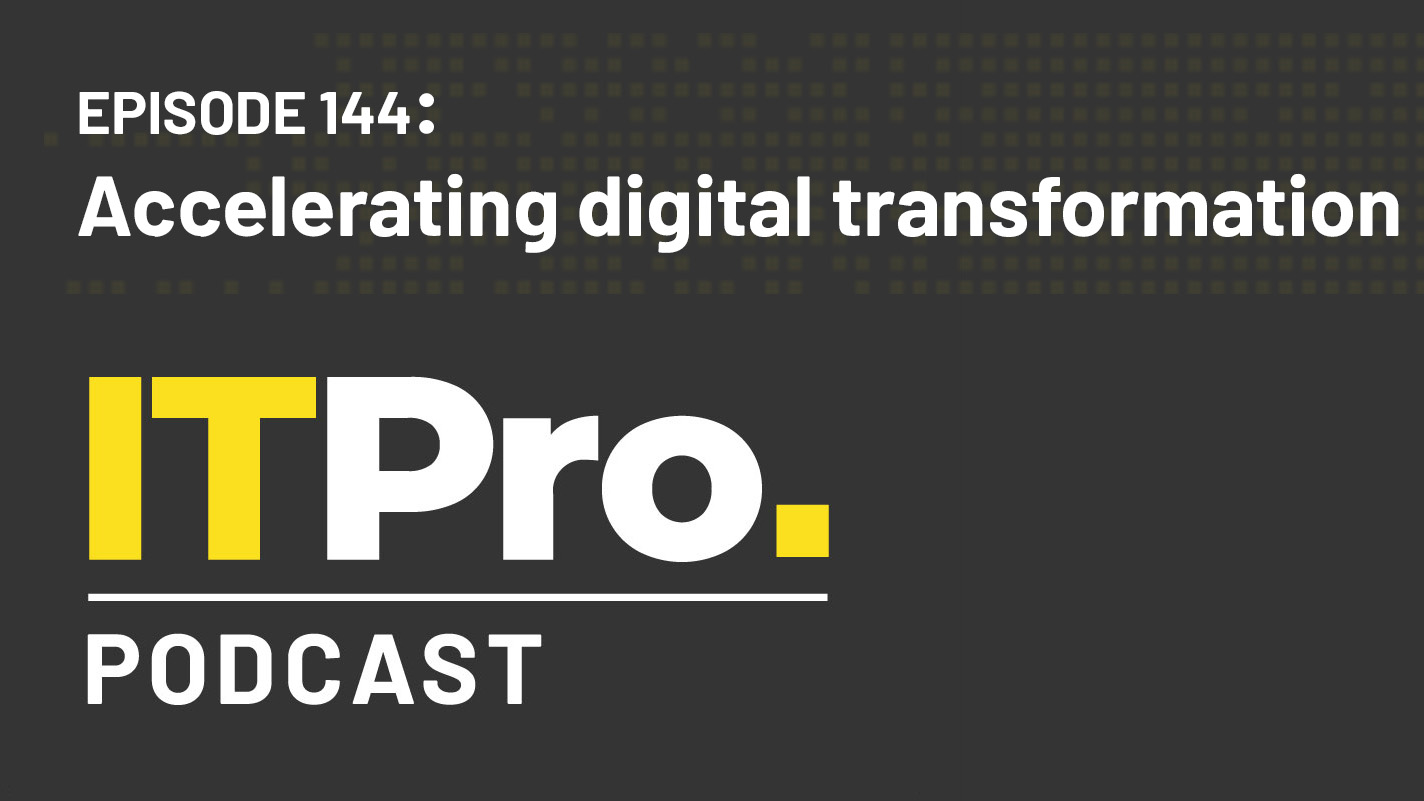 The IT Pro Podcast: Accelerating digital transformation
The IT Pro Podcast: Accelerating digital transformationIT Pro Podcast Implementation is just as important as the value of change
-
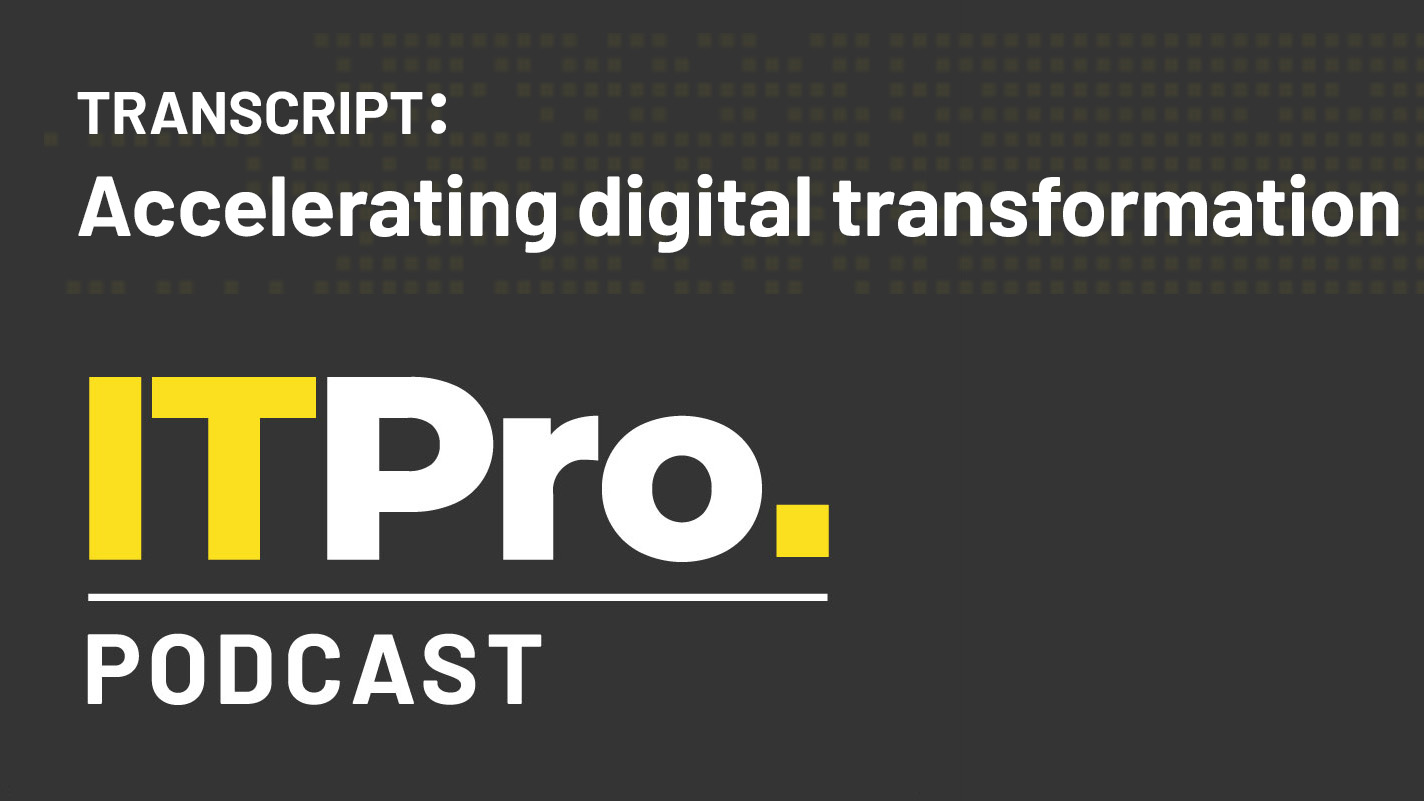 Podcast transcript: Accelerating digital transformation
Podcast transcript: Accelerating digital transformationIT Pro Podcast Read the full transcript for this episode of the IT Pro Podcast
-
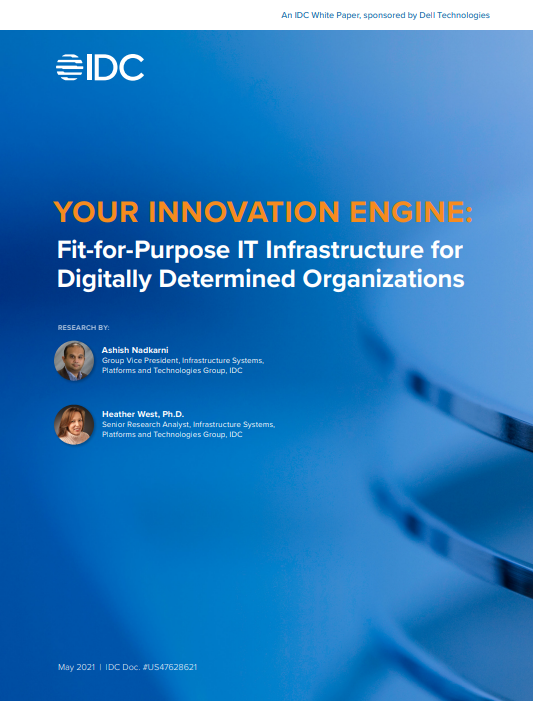 Fit-for-purpose IT infrastructure for digitally determined organisations
Fit-for-purpose IT infrastructure for digitally determined organisationsWhitepaper Your innovation engine: Guiding organisations through change in the new digital economy
-
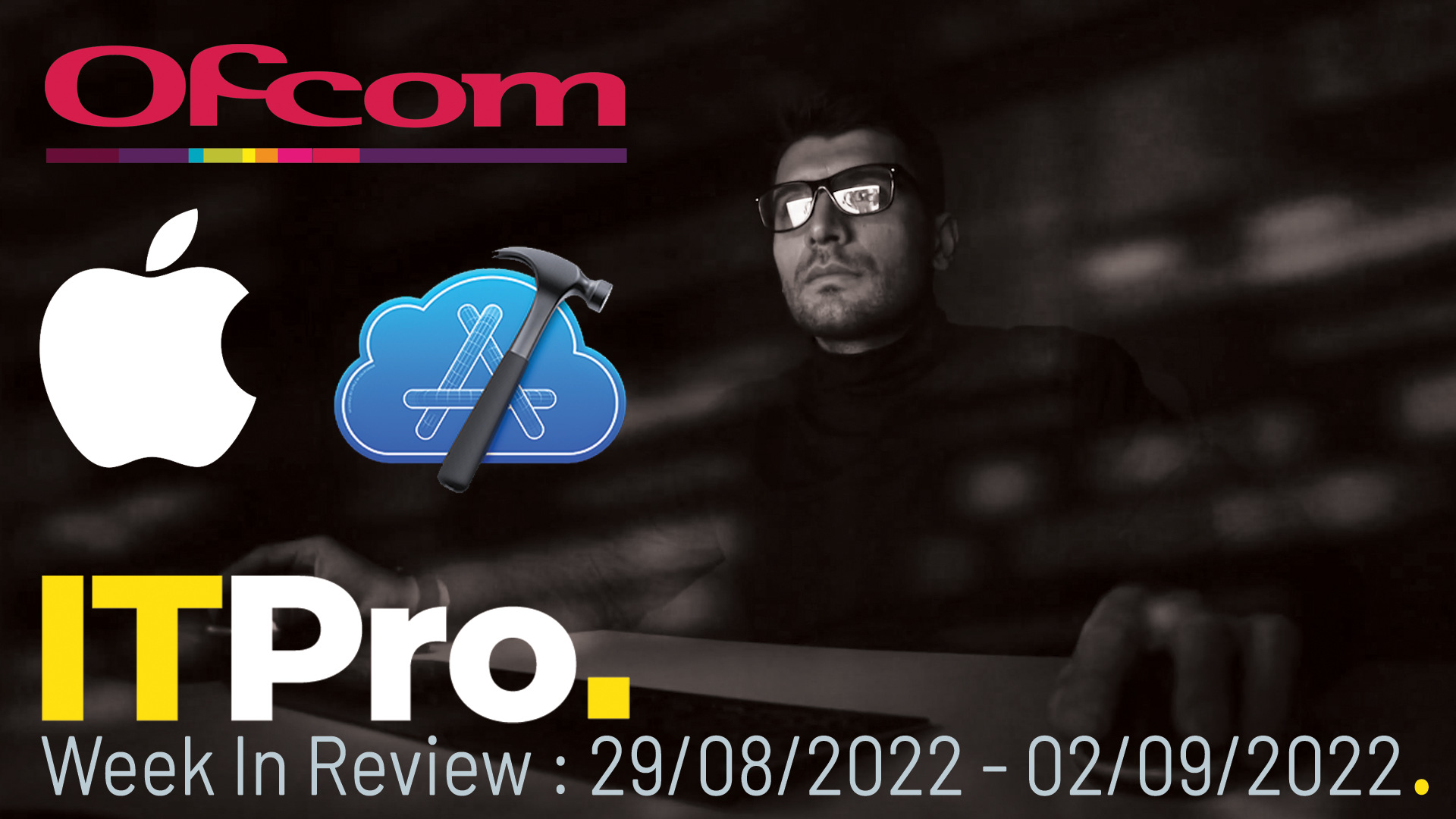 IT Pro News in Review: CIOs face a challenge, Ofcom's telecom fines, Apple expands Xcode
IT Pro News in Review: CIOs face a challenge, Ofcom's telecom fines, Apple expands XcodeVideo Catch up on the biggest headlines of the week in just two minutes
-
 CIO role has 'drastically changed' over last 24 months, says Lenovo
CIO role has 'drastically changed' over last 24 months, says LenovoNews Globally survey suggests chief information officers have greater influence over their company now the role has expanded beyond technology
-
 How can CIOs help to close the tech skills gap?
How can CIOs help to close the tech skills gap?In-depth The most well-equipped IT leaders can take a number of practical steps to close the divide within their organisations
-
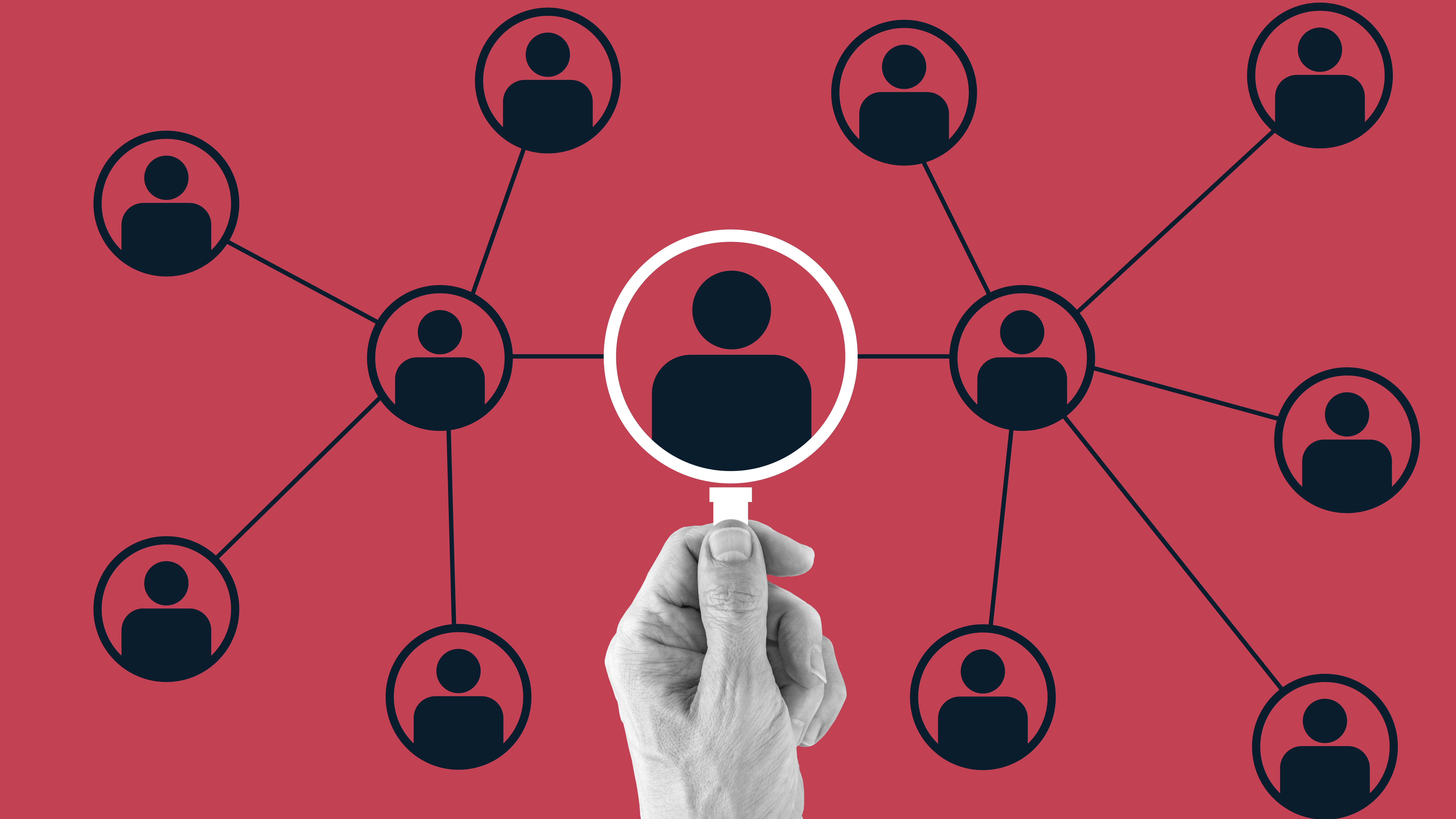 What is a virtual CIO (vCIO) and does your business need one?
What is a virtual CIO (vCIO) and does your business need one?In-depth With tech skills in short supply, organisations are turning to temporary expertise to see through critical digital transformation projects

